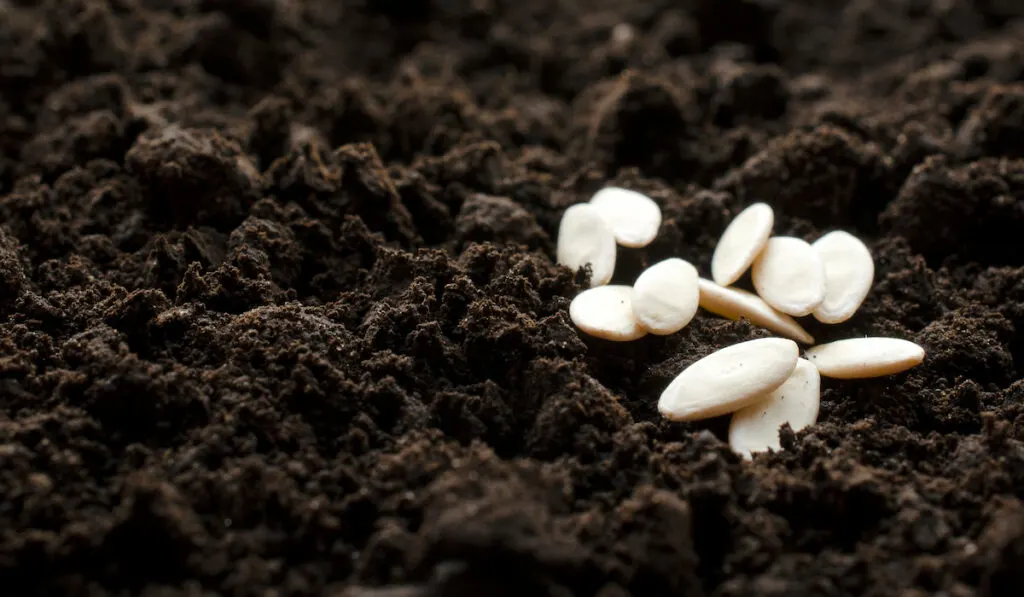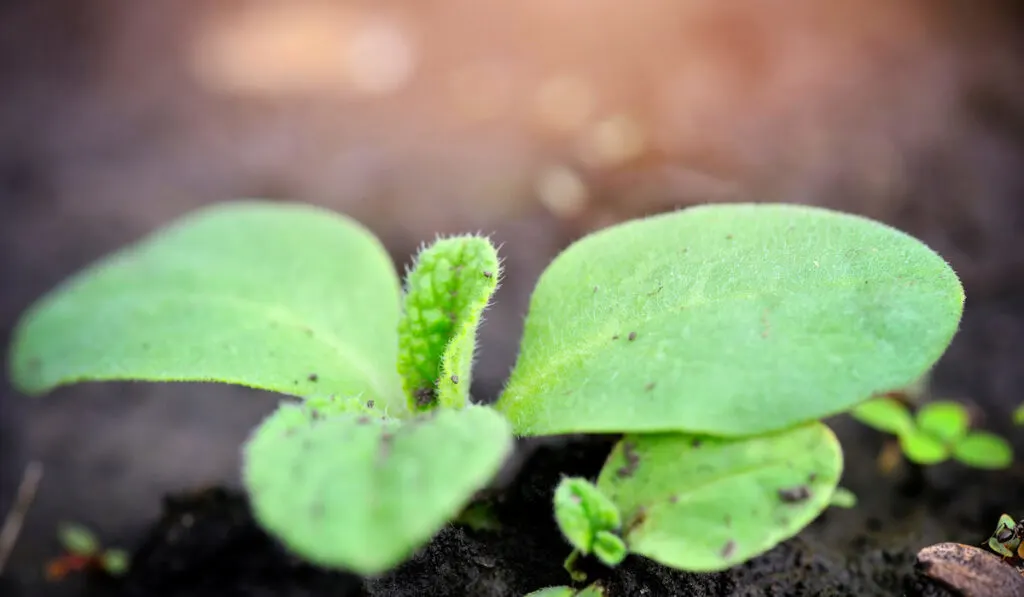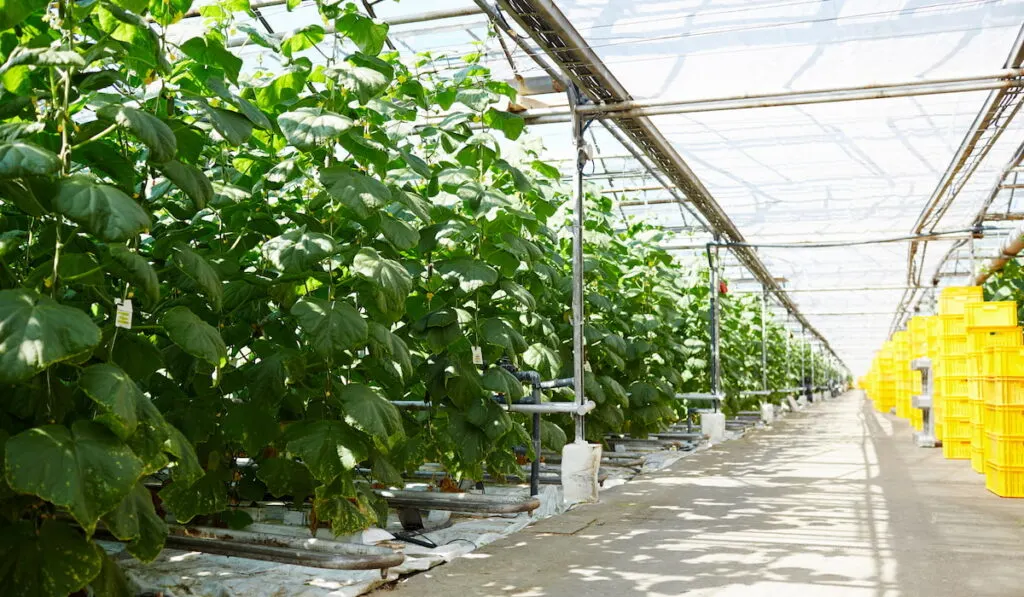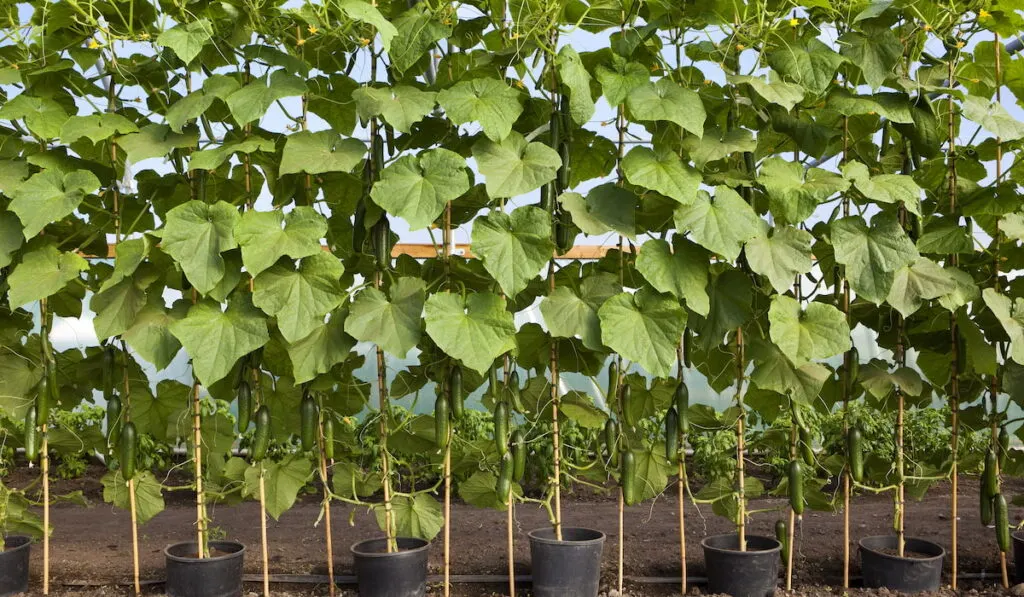Cucumbers are fresh vegetables consumed either raw as salads or cooked. There have been arguments on whether cucumber is a fruit or a vegetable but most research works term it as a vegetable.
Growing cucumbers in raised beds is done mostly when there is limited space in the gardens or when you want to grow a particular cucumber variety like the bushy type.
However, you need to have good knowledge of how to go about it, the pros and cons, and the factors involved in the maintenance of raised bed cucumbers.

Cucumbers are from the Cucurbitaceae family and their scientific name is Cucumis sativus.
Table of Contents
Growing Cucumbers in a Raised Bed
In order to grow cucumbers in raised beds, there are a number of factors you need to consider.
- The cost of the raised bed. Choose one that is affordable.
- The condition of the soil beneath the beds. This is done by digging the beneath soil to do away with any debris that can hinder root development.
- Soil depth requirements, preferably 18-24 inches.
Seed Propagation

Just like any other cucurbits, cucumber roots do not tolerate disturbance due to uprooting. Thus the best way to grow these plants is by use of seeds. Ensure that the soil is warm enough before sowing the seeds. Otherwise, the seeds will freeze and fail to germinate.
Plant two or three seeds an inch deep in the soil. You will be able to notice sprouts in a few days, probably one to two weeks after sowing.
Plant cucumber seeds using a spacing of 20 to 36 inches away from each other. However, bushy varieties can be closely spaced because their root system doesn’t go deep in the soil as the vining varieties.
Vegetative Propagation
Cucumbers can also be grown from cuttings derived from the existing mother plant. Once the side shoots mature, carefully cut the side shoots using a clean knife. Avoid damaging the mother plant.
Carefully place the cutting in a container with cold water to enhance root growth. Ensure that you change the container water on a daily basis to avert stagnation. In a period of one to two weeks, you will be able to see roots appearing.
Finally, transplant them in another container once they grow big. Space them, 30-40 cm apart to ensure that the roots spread out evenly.
Starting Cucumbers Indoors vs. Outdoors
Advantages of Starting Cucumbers Indoors
- Starting cucumbers indoors is very essential if you want to harvest them early. This is advisable because indoor growing conditions can be controlled as desired unlike outside.
- Cucumbers grown indoors are always well-maintained, pruned and trained.
- They are also free from pest and disease attacks and this is due to the high maintenance tips.
Disadvantages of Growing Cucumbers Indoors.
- Despite the fact that cucumbers, are best started in indoor environments, they take more time to adapt to the outdoor environmental conditions once transplanted. Thus not all varieties will grow well.
Advantages of Starting Cucumbers Outdoors.
- Cucumbers grown outdoors full time have a very good strong vigour.
- If you desire to have a very good yield and of good quantity, grow your cucumber plants outside from the beginning.
Disadvantages of Starting Cucumbers Outside.
- Cucumbers grown outside throughout are highly susceptible to pest and diseases attack. This is due to their high exposure to the outside conditions.
When to Plant Cucumbers
Being warm-season crops, cucumbers do not bear any chilly environments. In warm climates, plant them in late January all through to July. However, in minor climates, plant them between April and June.
Cucumbers breed greatest from late spring to late fall.
| Zone | Recommended Starting Method |
| 4 | Direct sowing |
| 5 | Direct sowing |
| 6 | Started plants |
| 7 | Direct sowing |
| 8 | Direct sowing |
| 9 | Direct sowing |
| 10 | Direct sowing |
Raised Bed Size and Planting Depth Recommendation for Cucumbers

For cucumbers propagated by use of seeds, plant the seeds 5-6 inches apart and 1-2 inches deep in the soil. Once the seedlings grow to 4 or 5 inches tall, thin them to one seedling every 16 inches.
In the case of cuttings, they vary from 4 to 10 inches. However, some cuttings may be up to 30 inches. The diameter of these cuttings may range from 0.5-1 inch.
Growing Cucumbers Vertically

The main reason why you should try growing cucumbers vertically is to save space in limited gardens and still get a plentiful yield, especially for the vining varieties.
Vertical Growth Tips
- The choice of the container is very essential. Large containers with a big depth and width are the most ideal. However, this will depend on the variety to be grown. Varieties with vines usually grow tall with deep roots although bushy varieties are small.
- By seed propagation, plant the seeds in smaller containers and then cover them with a thin layer of soil. Immediately they sprout, transfer the vigorous/healthy ones only to the larger containers or on a ground that is free from frost.
- Ensure you position your cucumber plants in warm areas with less wind. However, do not expose them to too much sunlight.
- The type of soil used should be rich in nutrients, loose and of good drainage capacity to prevent excessive water retention.
- In order to get a healthy yield, ensure that frequent and deep watering is done. However, do not wet the leaves. It may result in fungal diseases.
- Add slow release fertilizers at the time of planting but remember to side-dress with aged manure once the plants begin to flower. You can also add mulch on the soil to help in moisture retention.
5 Advantages of Growing Cucumbers Vertically

- When the cucumber fruits remain in the soil for an elongated period of time, there may be chances of developing fruit rot hence vertical growth is essential.
- Vertical growth of cucumber vines increases aeration, easy to water and keeps the leaves dry thus avoids outbreaks of fungal diseases.
- Vertical growth enables you to harvest the cucumber fruits effortlessly and on time. The cucumbers usually lie close to the eye level thus you can easily spot them during harvesting.
- The harvested fruits are always clean since they do not come in contact with ground dirt.
- This type of growth allows cucumber leaves to grip more sunlight which eventually leads to a healthy plant with strong vigor.

Best Cucumber Varieties to Grow in a Raised Bed
The most ideal varieties for raised beds are the bushy ones. These are the most ideal because they are small with shallow rooting systems unlike the vine varieties. These include:
- Parisian Gherkin
- Pick-a-Bushel
- Salad Bush
- Spacemaster
I would recommend anyone to try growing cucumbers vertically on raised beds. Cucumbers grown by these methods usually have excellent yields all year round.
